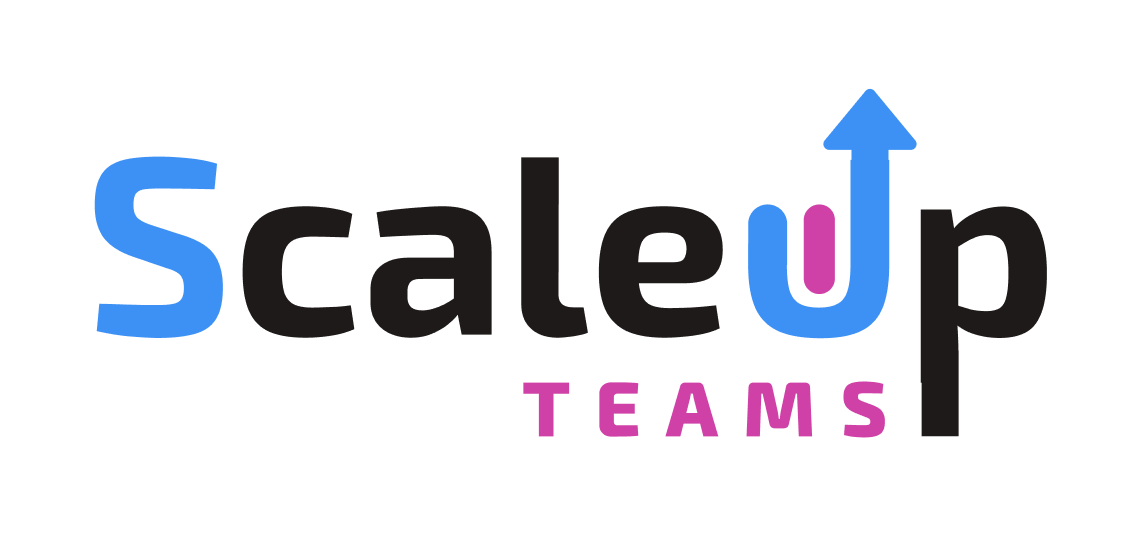Outsourcing and offshoring often get lumped together, yet they tackle two very different business challenges. Knowing the distinction—and the strengths of each—helps you scale with fewer hiccups, leaner costs, and the right skills on tap.
Key differences between outsourcing vs offshoring at a glance
| Dimension | Outsourcing | Offshoring |
| Primary driver | Expertise & flexibility | Labour cost & market access |
| Location | Domestic or overseas | Always overseas |
| Ownership of assets | Third-party supplier | Your firm (captive) or third party |
| Control | Lower—guided by contract | Higher in captive model; lower if outsourced |
| Typical risks | Vendor lock-in, data security | Political, cultural, time-zone, compliance |
| Common combo | Offshore outsourcing (both) | |
Understanding the models
Outsourcing
What is outsourcing?
You delegate a clearly defined business function—such as bookkeeping, IT support, digital marketing, or customer service—to a specialist outside your organisation. The provider can be based in Australia or overseas. They supply the staff, systems, and day-to-day management; you retain strategic oversight and pay for agreed outcomes.
Key advantages
- Rapid access to expertise – tap niche skills without long recruitment cycles.
- Cost flexibility – convert fixed salary overheads into variable, contract-based spend.
- Focus on core business – free internal teams to concentrate on revenue-generating activity.
- Scalable capacity – add or reduce service levels quickly to match project peaks or seasonality.
When to use it
- You need specialised talent that’s hard or expensive to hire locally.
- Workloads fluctuate and you can’t justify full-time head-count.
- Speed to market is critical and internal resources are already stretched.
- The task is important but not a strategic differentiator (e.g., payroll, help-desk, ad-hoc creative).
Pros & cons of outsourcing
| Pros | Cons |
| Rapid access to niche expertise | Reduced hands-on control over quality |
| Converts fixed salaries to variable costs | Potential vendor lock-in if knowledge isn’t documented |
| Frees internal team to focus on core work | Data-security and IP protection rely on supplier safeguards |
| Easy to scale up or down with demand | Cultural or brand mis-alignment can impact CX |
Offshoring
What is offshoring?
You relocate the same function to a lower-cost country to gain labour savings or proximity to a growth market. Offshoring takes two main forms:
- Captive centre – your own subsidiary office abroad; you control staff and processes directly.
- Third-party (offshore outsourcing) – an external provider in the target country runs the operation.
Key advantages
- Significant wage arbitrage – salaries in popular offshoring hubs can be 40–60 % lower than Australian equivalents.
- Round-the-clock service – opposite time zones enable 24/7 support and faster project turnaround.
- Larger talent pool – access high-volume skills (e.g., customer support, data processing) when local supply is tight.
- Market proximity – position teams nearer to Asian or US customers for language, cultural, or regulatory alignment.
When to use it
- Labour cost reduction is a primary objective and volumes are high enough to offset setup and governance overheads.
Processes are mature, well-documented, and can be managed remotely without degrading quality. - You plan sustained, multi-year demand—enough to justify investment in overseas infrastructure or partnerships.
- Expansion into a new geographic market requires local language or cultural capability that’s scarce at home.
Pros & cons of offshoring
| Pros | Cons |
| Major wage savings (40–60 %) | Political, economic, and currency risks |
| 24/7 coverage through time-zone spread | Time-zone and cultural gaps can slow collaboration |
| Access to large, specialised talent pools | Extra compliance layers (tax, data, labour laws) |
| Closer to growth markets for sales/support | Higher upfront cost and oversight load for captive centres |
How outsourcing vs offshoring compare
1. Primary Driver – Expertise & Flexibility vs Labour Cost & Market Access
When you strip away buzzwords, every resourcing decision boils down to why you’re shifting the work. If the goal is sharper skills, faster ramp-up, or variable capacity, outsourcing is built for that. If the aim is to reset your cost base or plant a flag in a growth region, offshoring takes the lead.
- Outsourcing: Ideal when you need hard-to-find know-how fast—cyber-security audits, CRO, multilingual VAs—without adding permanent head-count.
- Offshoring: Best when wage savings or proximity to new customers will move the profit needle more than specialist skills alone.
2. Location – Domestic or overseas vs always overseas
“Where” the work happens shapes everything from meeting times to legal exposure. Outsourcing lets you pick a provider in Perth, Manila, or anywhere in between. Offshoring, by definition, shifts the work outside Australia, typically to cost-efficient hubs in ASEAN, South Asia, or LATAM.
- Outsourcing: Provider can sit across town, across the country, or across the globe; you choose the best talent-to-cost ratio.
- Offshoring: Work relocates overseas to capture labour savings or local-market advantages.
3. Ownership of Assets – Third-Party Supplier vs Captive/Third-Party
Asset ownership determines who controls the tech stack, process IP, and data security. With outsourcing, the vendor brings its own tools and keeps day-to-day custody of the assets. Offshoring splits in two: a captive centre is yours end-to-end, while third-party offshoring mirrors the outsourced model under foreign law.
| Outsourcing | Offshoring | |
| Infrastructure | Provider’s tools, licences, SOPs | Captive: yours |
| IP & data | Protected by contract & NDAs | Captive keeps full control; third-party echoes outsourcing but offshore |
| Exit ease | Swap vendors via termination clause | High sunk costs if captive; contractual exit if third-party |
4. Control – Lower (Contract-driven) vs Higher (Captive) / Lower (Third-party)
Control is about how tightly you can steer performance, culture, and compliance. Outsourcing hands the wheel to the vendor within agreed KPIs. A captive offshore team gives you near-in-house control—just in a cheaper market. Third-party offshoring sits in the middle, adding geographical distance to the usual outsourcing trade-offs.
- Outsourcing: You steer via KPIs and SLAs; day-to-day decisions rest with the vendor.
- Offshoring (captive): You run the show—hiring, tooling, culture—just offshore.
- Offshoring (third-party): Similar control to outsourcing, with added distance and time-zone hurdles.
5. Typical risks – Vendor lock-in & data Security vs Political, cultural, time-zone, compliance
Every model carries risk; the flavour simply changes. Outsourcing risks revolve around vendor reliability and data security. Offshoring layers on geopolitical shifts, currency swings, and cross-border compliance—factors that can outweigh headline wage savings if left unmanaged.
| Risk lens | Outsourcing | Offshoring |
| Operational | Provider quality dips ⇒ switch costs | Currency swings, travel bans disrupt ops |
| Compliance | Data-privacy breaches, IP leakage | Extra layers of foreign labour, tax, and privacy law |
| Reputational | Poor vendor CX reflects on your brand | Cultural mis-steps or geo-political events hurt brand |
Quick take-aways:
- Expertise over cheap labour? Lean toward outsourcing.
- Volume cost base the priority? Offshoring wins—captive for maximum control, third-party for faster start-up.
- Low risk appetite? Keep functions local or outsource to certified Australian vendors.
- Chasing new market growth? Offshoring can double as a regional beach-head.
Virtual assistants: Outsourcing, offshoring — or both?
Virtual assistants (VAs) sit at the crossroads of these two models. By definition, a VA arrangement is outsourcing—you contract a specialist outside your payroll to handle defined tasks. Yet most VAs operate remotely, and many are based in the Philippines, India, or South Africa, so you also tap the offshoring upside without the capital outlay of a captive centre. That blend makes VAs the quickest, lowest-risk way to test the waters before scaling deeper into either model.
- On-shore VA: Pure outsourcing. You gain local time-zone alignment and local privacy protections, at a slightly higher hourly rate.
- Near-shore or offshore VA: Outsourcing plus labour-cost arbitrage. Perfect for routine, high-volume work—calendar management, data entry, lead prospecting—where response times and cultural fit are easily managed.
- Specialist VA pods: Assemble multiple VAs (e.g., bookkeeper + SEO tech + customer-support rep) under one contract to cover end-to-end workflows without hiring a full department.
- Scalability path: Start with a single VA, prove the process, then decide whether to (a) expand the outsourced team, (b) build a captive offshore hub, or (c) pull the function back in-house once volumes justify it.
Bottom line: If you need rapid expertise and cost control—with an option to scale globally later—virtual assistants deliver the best of both worlds.
How ScaleUp Teams mitigates the cons associated with outsourcing and offshoring
ScaleUp Teams was designed to give you the cost and capacity wins of offshore virtual assistants without the usual talent, oversight, or downtime headaches. Here’s how we provide clear advantages to businesses:
| The usual concern | How ScaleUp Teams puts it to bed |
| Hit-and-miss talent quality | We recruit only the top 1 % of university-educated VAs in the Philippines, vetted for skills, reliability, and English fluency, so you start with proven performers. |
| Slow ramp-up & steep learning curves | A free one-week trial plus our seamless onboarding program lets the VA learn your systems while you gauge fit—no invoices until you’re happy. |
| Downtime and gaps in coverage | Each VA receives 10 days of paid leave on our tab, so you never fund downtime and your operations keep moving. |
| Lack of oversight or visibility | A dedicated account manager stays in touch, and we send transparent timesheets and one simple monthly invoice, so you always know who did what and when. |
| Process knowledge trapped with the provider | Our team creates documented SOPs during onboarding and will replace any under-performer free of charge—protecting continuity if you ever need a swap-out. |
| Admin headaches—multiple invoices, foreign payroll, HR | ScaleUp handles recruitment, HR, payroll, leave, and compliance end-to-end; you just approve hours and pay a single, itemised invoice. |
| Mis-aligned tone or culture | Rigorous vetting plus onboarding and training ensures your VA speaks your brand’s language from day one. |
Outsourcing, offshoring, or VAs: Deciding your next move
Outsourcing and offshoring aren’t rivals—they’re tools. Use outsourcing when you need specialist skills on tap and the freedom to scale work up or down. Choose offshoring when labour cost and 24/7 coverage will lift your bottom line more than on-shore expertise. And when you want both benefits without the usual risks, virtual assistants give you the perfect blend.
ScaleUp Teams removes the guesswork:
- Top-tier, pre-vetted VAs (the top 1 % in the Philippines)
- A free one-week trial and zero downtime guarantee
- Local account management, transparent timesheets, one simple invoice
If you’re ready to cut costs, boost capacity, and keep your focus on strategic growth, a ScaleUp Teams virtual assistant is the smartest next step. Book your discovery call today and start your risk-free trial.



